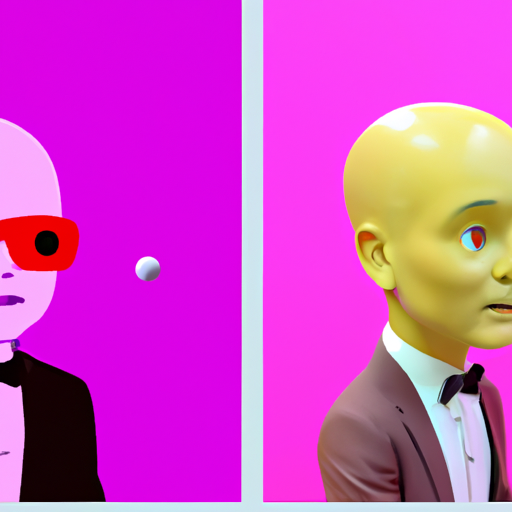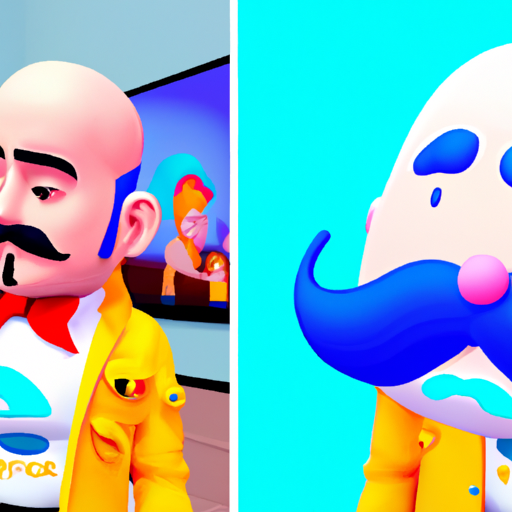
-
Table of Contents
Character Design Trends in Animation and Gaming

Character design plays a crucial role in the success of animated films and video games. It is the process of creating visually appealing and memorable characters that resonate with the audience. Over the years, character design trends have evolved, reflecting changes in technology, cultural influences, and audience preferences. In this article, we will explore some of the current character design trends in animation and gaming, backed by research, examples, and case studies.
1. Simplified and Minimalistic Designs
In recent years, there has been a shift towards simplified and minimalistic character designs in both animation and gaming. This trend can be attributed to several factors:
- Appealing to a broader audience: Simplified designs are often more accessible and can appeal to a wider range of viewers or players. They are easier to understand and can transcend language and cultural barriers.
- Enhancing readability: In fast-paced games or action-packed animated sequences, characters with simpler designs are easier to read and follow. This improves the overall user experience and allows players or viewers to focus on the story or gameplay.
- Optimizing for different platforms: With the rise of mobile gaming and streaming platforms, character designs need to be adaptable to different screen sizes and resolutions. Simplified designs often translate better across various devices.
An excellent example of this trend is the character design in the animated film “The Incredibles” by Pixar. The characters have clean lines, bold shapes, and minimal details, allowing the audience to quickly identify and connect with them.
2. Diversity and Inclusivity
In recent years, there has been a growing emphasis on diversity and inclusivity in character design. This trend reflects the increasing awareness and demand for representation in media. Here are some key aspects of this trend:
- Representation of different cultures and ethnicities: Characters now come from a wide range of backgrounds, reflecting the diversity of the real world. This not only provides more relatable experiences for the audience but also promotes inclusivity.
- Breaking gender stereotypes: Character designs are challenging traditional gender roles and stereotypes. Female characters are no longer limited to being damsels in distress, and male characters can exhibit vulnerability and emotional depth.
- Body positivity: There is a growing movement towards representing characters with diverse body types and sizes. This promotes body positivity and helps combat unrealistic beauty standards.
An excellent example of this trend is the character design in the video game “Overwatch” by Blizzard Entertainment. The game features a diverse cast of characters from different ethnicities, genders, and body types, allowing players to find representation and connect with the characters on a personal level.
3. Retro and Nostalgic Designs
Retro and nostalgic character designs have gained popularity in recent years, particularly in the gaming industry. This trend taps into the nostalgia of older generations while also appealing to younger audiences. Here’s why this trend has become prevalent:
- Appealing to multiple generations: Retro designs can evoke a sense of nostalgia in older players while introducing younger players to a different aesthetic. This allows game developers to target a broader audience.
- Standing out in a crowded market: With numerous games and animations being released regularly, a retro design can help a product stand out from the competition. It offers a unique visual style that sets it apart.
- Creating a sense of familiarity: Retro designs often draw inspiration from classic games or animations, creating a sense of familiarity and comfort for the audience. This can enhance the overall enjoyment and engagement.
An excellent example of this trend is the character design in the video game “Cuphead” by Studio MDHR. The game features hand-drawn, 1930s-inspired animation, reminiscent of classic cartoons like Mickey Mouse and Popeye. This nostalgic design choice garnered critical acclaim and a dedicated fan base.
4. Customization and Personalization
Character customization and personalization have become increasingly popular in both animation and gaming. This trend allows players or viewers to create unique characters that reflect their individuality. Here’s why customization has become a significant trend:
- Enhancing player or viewer engagement: Allowing players or viewers to customize characters increases their emotional investment in the game or animation. It creates a sense of ownership and personal connection.
- Encouraging self-expression: Customization options provide an outlet for self-expression, allowing players or viewers to create characters that represent their identities, preferences, and aspirations.
- Extending replayability: In games, character customization can enhance replayability by offering different playstyles and strategies. Players can experiment with various combinations to find their preferred approach.
An excellent example of this trend is the character design in the video game “The Sims” by Maxis. The game allows players to customize every aspect of their characters, from physical appearance to personality traits. This level of customization has been a significant factor in the game’s enduring popularity.
5. Realistic and Immersive Designs
Advancements in technology have enabled character designers to create more realistic and immersive designs. This trend is particularly prevalent in the gaming industry, where realistic characters can enhance the player’s immersion and emotional connection. Here’s why this trend has gained traction:
- Advancements in graphics technology: With the increasing power of gaming consoles and computers, character designers can create highly detailed and realistic characters. This allows for more immersive storytelling and visual experiences.
- Creating emotional connections: Realistic characters can evoke stronger emotional responses from players or viewers. They can convey subtle facial expressions and body language, making them more relatable and human-like.
- Pushing the boundaries of creativity: Realistic designs can challenge the limits of what is possible, pushing character designers to explore new techniques and technologies. This drives innovation in the industry.
An excellent example of this trend is the character design in the video game “The Last of Us Part II” by Naughty Dog. The game features highly detailed and realistic characters, with intricate facial animations that convey a wide range of emotions. This level of realism has been praised for its impact on the player’s emotional engagement.
Summary
Character design trends in animation and gaming have evolved over the years, reflecting changes in technology, cultural influences, and audience preferences. Simplified and minimalistic designs have become popular due to their accessibility and adaptability. Diversity and inclusivity are now emphasized, breaking traditional stereotypes and promoting representation. Retro and nostalgic designs
